Freelancing in the Middle East has moved from a side hustle to a mainstream career path. Governments across the region, from the UAE to Saudi Arabia, are encouraging flexible work models and digital entrepreneurship, while businesses are increasingly open to hiring independent professionals for both local and remote projects. By 2025, the Middle East freelancing ecosystem is thriving, supported by a mix of global platforms with strong regional presence and homegrown marketplaces tailored to cultural and business needs.
This guide highlights the top freelance websites shaping the Middle East market in 2025, outlining what they offer, their strengths, and who they serve best.
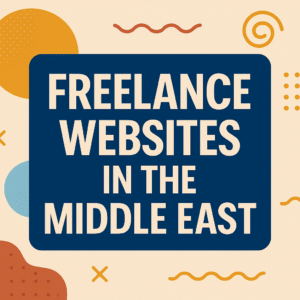
Flexable UAE
Flexable, which has quickly gained traction in markets like the United States and India, is steadily making its presence felt in the UAE. By 2025, the platform has established itself as a hybrid marketplace that caters to both individual freelancers and agencies. Its key differentiator is the focus on scaling opportunities beyond one-off gigs. Instead of purely transactional jobs, Flexable UAE emphasizes structured projects where freelancers can collaborate with teams or plug into larger agency-led contracts. This approach aligns well with the UAE’s dynamic business ecosystem, particularly in sectors such as technology, marketing, and design.
Highlights and Key Features
-
Supports both freelancers and agencies, offering flexibility for different work scales.
-
AI-driven recommendations help freelancers find relevant, high-value projects.
-
Built-in project management tools for communication, milestones, and payments.
-
Curated onboarding ensures vetted freelancers and credible clients.
-
Growing demand in Dubai and Abu Dhabi, with regional expansion underway.
Pros
-
Positions freelancers for long-term, higher-value projects.
-
Agency support opens doors to larger contracts.
-
Curated entry reduces spam and low-quality listings.
-
Integrated tools streamline project execution.
Cons
-
Still new in the Middle East, so client base is smaller than established platforms.
-
Limited visibility compared to big global names like Upwork or Fiverr.
-
Best suited for tech, creative, and marketing professionals, less for general tasks.
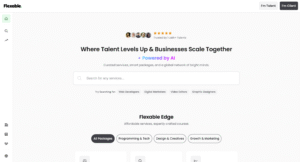
Ureed
Ureed is one of the most prominent freelancing platforms born in the Middle East, originally focused on connecting Arabic-speaking talent with businesses across the region. By 2025, it has evolved into a full-scale marketplace for a wide range of freelance services, including content writing, translation, design, marketing, and tech. What sets Ureed apart is its deep understanding of the regional market and its emphasis on language, culture, and business practices specific to the MENA region. It attracts both local startups and global enterprises looking for talent with regional expertise.
Highlights and Key Features
-
Specialized focus on Arabic-speaking freelancers and Middle East–based businesses.
-
Wide service categories including creative, technical, and professional services.
-
Escrow-secured payment system to protect freelancers and clients.
-
Transparent rating and review system for credibility.
-
Strong presence in the UAE, Saudi Arabia, Egypt, and other GCC countries.
Pros
-
Tailored to the Middle Eastern market, offering cultural and linguistic advantages.
-
Growing demand from regional businesses adopting flexible work models.
-
Safer payment structures compared to informal job boards.
-
Provides access to both regional and international clients.
Cons
-
Competition is high in popular categories like content writing and design.
-
Limited appeal for freelancers outside the MENA region.
-
Some projects still pay lower than global market averages.
![]()

Truelancer (UAE)
Truelancer, originally an India-based freelancing platform, has expanded strongly into the UAE and wider Middle East market by 2025. The platform connects freelancers with businesses across industries such as IT, writing, design, marketing, and virtual assistance. What makes Truelancer appealing in the UAE is its balance between affordability and accessibility. Small and medium-sized businesses in the region use it to find cost-effective freelance talent, while professionals gain access to both regional and international projects. For freelancers based in the UAE, it offers a growing pool of opportunities without the heavy competition seen on global giants like Upwork or Fiverr.
Highlights and Key Features
-
Wide service categories including tech, design, writing, and admin support.
-
Flexible project types: hourly, fixed-price, or recurring work.
-
Escrow-secured payments to ensure reliability.
-
Affordable membership plans tailored for freelancers at different stages.
-
Increasing adoption among UAE startups and SMEs.
Pros
-
Expanding footprint in the UAE with localized demand.
-
Less competitive compared to global marketplaces, giving new freelancers a chance.
-
Strong security for payments through escrow.
-
Offers both small gigs and long-term contracts.
Cons
-
Still smaller than established platforms like Upwork or Freelancer.
-
Project budgets can lean toward lower or mid-range pricing.
-
Limited visibility outside its main markets in Asia and the Middle East.
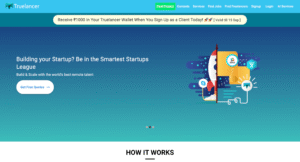
FreelancerHub
FreelancerHub is a growing freelancing marketplace designed specifically for the Middle East, with a focus on connecting businesses with regional talent. By 2025, it has positioned itself as a professional yet accessible alternative to global platforms, offering a space where freelancers across tech, design, writing, translation, and digital marketing can find work tailored to the local market. What makes FreelancerHub stand out is its emphasis on regional compliance, trust, and building sustainable freelancer-client relationships. It appeals particularly to startups, SMEs, and entrepreneurs in the UAE, Saudi Arabia, and Qatar who prefer working with talent familiar with local business culture.
Highlights and Key Features
-
Dedicated to Middle East–based freelancers and businesses.
-
Categories span IT, design, content, translation, and digital marketing.
-
Escrow-secured payment system ensures reliability.
-
Built-in project tracking and communication tools.
-
Focus on connecting clients with professionals who understand regional culture and language.
Pros
-
Localized platform that reflects the needs of Middle Eastern businesses.
-
Safer and more transparent than informal job boards.
-
Lower competition compared to global freelancing marketplaces.
-
Supports long-term contracts as well as quick projects.
Cons
-
Smaller client pool compared to international giants like Upwork or Fiverr.
-
Limited recognition outside the Middle East.
-
Some categories may not yet have enough demand, restricting opportunities.

GoFreelance
GoFreelance is a UAE government-backed initiative that provides freelancers with an official work permit, making it one of the most trusted and practical platforms for independent professionals in Dubai and the wider Emirates. By 2025, GoFreelance has become a go-to choice for skilled workers who want to operate legally while accessing both regional and international projects. Unlike purely digital marketplaces, GoFreelance is tied directly to the Dubai Media City, Dubai Internet City, Dubai Knowledge Park, and Dubai Design District, which means it integrates freelancers into key industries such as media, technology, education, and design. For professionals who want legitimacy and access to corporate clients, GoFreelance is a powerful gateway.
Highlights and Key Features
-
Official freelance work permit issued in partnership with TECOM Group.
-
Legally allows professionals to live and work as freelancers in the UAE.
-
Strong industry focus: media, design, technology, and education.
-
Simplified visa sponsorship options for freelancers and dependents.
-
Access to regional businesses that prioritize verified professionals.
Pros
-
Government-backed, providing credibility and security.
-
Direct access to top industries and established companies.
-
Legal recognition makes it easier to build long-term freelance careers.
-
Professional positioning helps freelancers stand out from global competition.
Cons
-
Available only to residents in the UAE, limiting its accessibility.
-
Requires permit and visa costs, which may not suit beginners.
-
More tailored to skilled professionals rather than entry-level freelancers.

Easy Freelance
EasyFreelance is a Bahrain-based freelancing platform that has steadily expanded its footprint across the Middle East by 2025. It was designed to simplify the process of connecting freelancers with businesses while keeping costs transparent and processes efficient. Unlike some global marketplaces, EasyFreelance focuses on regional industries such as translation, content writing, digital marketing, web development, and graphic design, making it a familiar and practical choice for both Arabic and English-speaking professionals. For small businesses and startups in the Gulf, it offers a straightforward way to hire talent without the barriers of complex contracts or global competition.
Highlights and Key Features
-
Regional focus with a bilingual interface (Arabic and English).
-
Covers a wide range of categories including IT, marketing, design, and translation.
-
Escrow-based payment system for financial protection.
-
Streamlined job posting and bidding process.
-
Transparent fee structure for both freelancers and clients.
Pros
-
Tailored to Middle Eastern businesses and freelancers.
-
Lower competition compared to global platforms, giving freelancers better chances.
-
Affordable and accessible for SMEs and startups.
-
Supports both short-term gigs and longer contracts.
Cons
-
Smaller project volume than international platforms.
-
Limited visibility for freelancers seeking global clients.
-
Growth is still concentrated in GCC markets, so opportunities may vary elsewhere.
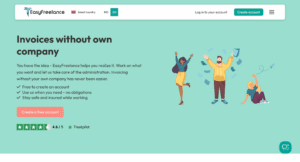
Aydo
Aydo is a rising freelancing platform from Saudi Arabia that has quickly gained traction across the Middle East by 2025. Designed to support both individuals and enterprises, Aydo emphasizes efficiency and trust, positioning itself as more than just a gig marketplace. It connects freelancers with companies seeking services in fields like design, IT, digital marketing, consulting, and content creation. What sets Aydo apart is its focus on building professional, long-term relationships rather than one-off transactions, which makes it especially attractive to businesses in Saudi Arabia’s growing startup and corporate ecosystem.
Highlights and Key Features
-
Strong presence in Saudi Arabia with regional expansion across the GCC.
-
Categories include creative industries, IT, marketing, and business services.
-
Emphasis on long-term contracts and professional engagements.
-
Secure payment handling to protect both freelancers and clients.
-
Bilingual platform with support for Arabic and English.
Pros
-
Homegrown platform aligned with Saudi Arabia’s booming digital economy.
-
Encourages higher-value, long-term projects rather than only short gigs.
-
Less crowded than international sites, giving freelancers better visibility.
-
Trusted option for local businesses seeking vetted talent.
Cons
-
Limited global exposure compared to international platforms.
-
Still growing in size, so project availability can fluctuate.
-
Stronger focus on business services may leave out niche creative fields.
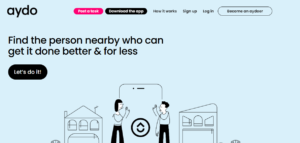
Malt UAE
Malt, the popular European freelancing marketplace, has expanded into the Middle East with a strong presence in the UAE. By 2025, Malt UAE has become a go-to platform for highly skilled professionals in fields such as IT, design, data science, marketing, and business consulting. Unlike platforms that focus heavily on small gigs, Malt positions itself as a premium marketplace where freelancers can secure high-value contracts with startups, agencies, and multinational companies operating in the region. Its client base is particularly strong in Dubai and Abu Dhabi, aligning with the UAE’s role as a global business hub.
Highlights and Key Features
-
Curated platform connecting top freelancers with premium clients.
-
Strong industry focus on IT, marketing, design, and consulting.
-
Transparent pricing with no hidden fees for freelancers.
-
Built-in tools for project management, invoicing, and payments.
-
Access to both regional and international businesses operating in the UAE.
Pros
-
Premium positioning attracts higher-paying clients.
-
Trusted by established companies, giving freelancers credibility.
-
Transparent fee structure is freelancer-friendly.
-
Expanding network of Middle Eastern and international projects.
Cons
-
More competitive for entry-level freelancers without strong portfolios.
-
Heavier focus on premium contracts may exclude smaller, quick gigs.
-
Still building full regional coverage beyond the UAE.

TaskRabbit UAE
TaskRabbit, originally founded in the United States, has expanded globally and made its way into the UAE, adapting its model to fit the region’s growing demand for on-demand services. Unlike platforms that focus mainly on digital freelancing, TaskRabbit UAE emphasizes local, hands-on tasks such as home repairs, furniture assembly, cleaning, moving help, and personal errands. By 2025, it has become a reliable go-to option for both expatriates and local residents in Dubai, Abu Dhabi, and other major cities who want quick access to trusted help for everyday needs. For freelancers, it offers a steady stream of flexible work opportunities with clear pricing and a user-friendly booking system.
Highlights and Key Features
-
Focused on physical, location-based tasks rather than remote projects.
-
Covers a wide range of services from household tasks to delivery and moving.
-
Easy-to-use mobile app for booking and managing tasks.
-
Secure payment system with upfront pricing.
-
Background checks and verification for freelancers, ensuring trust.
Pros
-
Strong local demand for everyday services ensures consistent work.
-
User-friendly platform that makes it easy to get started.
-
Transparent pricing gives both freelancers and clients confidence.
-
Opportunities to build repeat clients in growing UAE cities.
Cons
-
Limited to location-based tasks, not suitable for digital freelancers.
-
High competition in popular categories like cleaning and handyman services.
-
Income can be inconsistent if demand fluctuates seasonally.
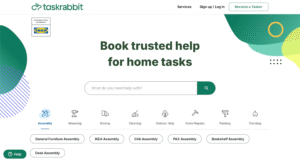
Upwork
Upwork is the largest and most established freelancing marketplace in 2025. It connects millions of professionals with clients across industries like tech, design, writing, and marketing. For many freelancers, Upwork is the entry point into the industry because of its global reach and volume of opportunities. Unlike niche platforms, it caters to both quick, one-off tasks and long-term contracts, making it flexible for different stages of a freelancer’s career. However, the size of the marketplace comes with heavy competition, and standing out requires a polished profile and a clear strategy.
Highlights and Key Features
- A wide range of categories, from software development to creative services.
- AI-driven job matching that recommends projects based on skills and past work.
- Escrow-protected payments that safeguard both freelancers and clients.
- Collaboration tools, including messaging, time tracking, and file sharing, built directly into the platform.
- Transparent client histories that let freelancers evaluate who they are working with.
Pros
- Enormous variety of jobs, from entry-level gigs to contracts with Fortune 500 companies.
- Global reach means freelancers can build an international client base.
- Flexible project types, including hourly and milestone-based work.
- Trusted escrow system provides financial security.
Cons
- High competition, especially for beginners trying to land their first projects.
- Service fees start at 20 percent for the first $500 earned with a client, decreasing only with larger contracts.
- Proposals require “Connects,” which cost money and add another barrier for new users.

Fiverr
Fiverr has built its reputation on simplicity. Instead of bidding on projects, freelancers create pre-packaged services called “gigs” that clients can purchase directly. This makes it one of the easiest platforms for new freelancers to start with, since the process is closer to running an online store than competing in a crowded bidding environment. Fiverr is especially popular among creatives like writers, designers, video editors, and marketers who can define clear deliverables. In 2025, the platform has grown more sophisticated with Fiverr Neo, an AI-powered matching system that helps freelancers connect with the right clients faster.
Highlights and Key Features
- Gig-based pricing structure with tiered packages for different budgets and scopes.
- Fiverr Neo, an AI assistant, improves client-freelancer matching.
- Messaging system for direct communication between buyers and sellers.
- Built-in portfolio tools for showcasing past work.
- Seller levels that increase visibility as freelancers build a track record.
Pros
- Easy setup makes it beginner-friendly.
- Transparent, upfront pricing appeals to clients.
- Ideal for creative professionals offering repeatable services.
- AI matching reduces the time spent searching for relevant projects.
Cons
- Commission is 20 percent across all earnings, which can feel steep.
- Competition is largely price-driven, making it harder to charge premium rates without strong reviews.
- Heavy reliance on ratings and reviews for visibility means slow growth for new sellers.
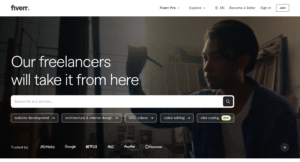
Freelancer.com
Freelancer.com is one of the most established global marketplaces, hosting millions of freelancers and clients across industries. Its defining feature is flexibility: freelancers can either bid on traditional projects or enter contests where clients choose a winning submission. This dual approach appeals to a wide range of professionals, from developers and marketers to designers looking to showcase their skills. While the platform’s size creates plenty of opportunities, it also leads to tough competition and a noticeable number of low-budget job postings. For freelancers who are persistent and strategic, it can still be a strong source of work.
Highlights and Key Features
- Project bidding system alongside creative contests.
- Escrow-secured payments to protect both sides.
- Freelancer Rewards and Preferred Freelancer status to boost visibility.
- Progress tracking tools for managing deliverables.
- Free membership with limited bids, plus paid plans for added exposure.
Pros
- Large global client base across diverse industries.
- Option to earn through both contests and project bids.
- Escrow payment system ensures financial protection.
- Membership tiers give flexibility for different career stages.
Cons
- Intense competition, often driving rates down.
- Free plan limits the number of bids available.
- High volume of low-budget projects makes it harder to find premium work.

Toptal
Toptal positions itself as an exclusive network that connects the top three percent of freelancers with premium clients. It is best known in fields like software development, design, finance, and project management. Unlike open marketplaces, Toptal uses a rigorous screening process that includes language tests, technical evaluations, and live interviews. Only a small fraction of applicants are accepted, which creates an elite environment where clients know they are hiring proven professionals. For experienced freelancers, Toptal offers access to long-term, high-paying projects with companies ranging from startups to global enterprises.
Highlights and Key Features
- Extensive vetting process that ensures high standards.
- Client matches are made quickly, often within 48 hours of acceptance.
- Secure payment system with hourly rates typically between 100 and 250 dollars.
- Dedicated project management tools to streamline collaboration.
- Access to premium clients, including established brands and funded startups.
Pros
- High-value projects with consistent, well-paying work.
- Strong credibility due to selective entry standards.
- Faster client matching compared to open bidding platforms.
- Long-term contracts are common, offering stability.
Cons
- Very selective application process excludes most freelancers.
- Focused heavily on technical and design roles, with limited opportunities in other categories.
- Not suitable for beginners or those building early-stage portfolios.

Guru.com
Guru is a long-standing freelancing platform that emphasizes flexibility and affordability. It caters to a broad range of professionals, including developers, writers, designers, and marketers, while keeping service fees lower than many competitors. One of its standout features is SafePay, which secures funds in escrow until work is approved. The platform allows freelancers to define how they want to be paid, whether hourly, per milestone, or by project, which makes it appealing for different working styles. Although Guru does not have the same volume of opportunities as giants like Upwork, it remains a dependable option for freelancers seeking consistent work with fewer overhead costs.
Highlights and Key Features
- Multiple payment structures, including hourly, milestone-based, and recurring.
- SafePay escrow system ensures secure transactions.
- WorkRoom collaboration space for managing communication and files.
- Competitive commission rates ranging from 5 to 9 percent.
- Visibility tools to help freelancers showcase skills and attract clients.
Pros
- Lower fees compared to most major freelancing platforms.
- Flexible payment options suit different project types.
- Built-in collaboration features make project management simple.
- Secure escrow system gives peace of mind for both parties.
Cons
- Smaller project volume reduces variety and scale of opportunities.
- User interface feels dated compared to newer platforms.
- Less marketing presence makes it harder to attract top-tier clients.

PeoplePerHour
PeoplePerHour is a UK-based freelancing platform that has built a strong presence across English-speaking markets, especially in Europe. It is popular among professionals in design, tech, and marketing, offering both gig-style services and traditional project-based work. Freelancers can post fixed-price packages, known as “Hourlies,” or submit proposals for client projects. This hybrid approach makes it flexible for those who want predictable income alongside more custom engagements. While the platform attracts serious clients, it also has a reputation for being budget-conscious, which can limit earning potential for premium freelancers.
Highlights and Key Features
- Combination of Hourlies (pre-set services) and project bidding.
- Escrow-protected payments to secure transactions.
- Transparent freelancer rankings and client reviews.
- Built-in project management tools to support collaboration.
- Hourly rates often range from 30 to 100 dollars or more, depending on skills and demand.
Pros
- Strong reach in the UK and EU markets.
- Flexibility to sell packaged services or bid on custom projects.
- Reliable payment protection through escrow.
- Visibility tools and rankings help freelancers stand out.
Cons
- Customer support can be slow to respond.
- Many clients focus on lower budgets, reducing premium opportunities.
- Limited presence outside English-speaking markets.
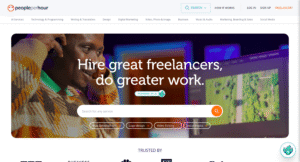
LinkedIn, already the world’s largest professional networking platform, has expanded into freelancing through its Services Marketplace. Instead of functioning as a full freelancing platform, it integrates directly with a freelancer’s LinkedIn profile, allowing them to list services and attract clients organically. Freelancers benefit from the credibility of their existing professional network and visibility through LinkedIn’s search and job board features. While it lacks built-in tools for project management or payments, LinkedIn is powerful for freelancers who are skilled at networking and building direct client relationships.
Highlights and Key Features
- Service listings tied directly to freelancer profiles.
- Job board integration for discovering freelance opportunities.
- Professional credibility through skill endorsements and recommendations.
- Content sharing tools to increase visibility and attract inbound leads.
- Optional premium plans, ranging from 30 to 100 dollars per month, for greater profile exposure.
Pros
- High trust and professional credibility compared to traditional platforms.
- Networking opportunities make it easier to build long-term client relationships.
- Free to use at the basic level.
- Great for freelancers who actively market themselves through posts and engagement.
Cons
- No in-platform payment processing, so freelancers must manage billing independently.
- Lacks project tracking and collaboration tools.
- Still a developing marketplace, with limited traction compared to dedicated freelancing platforms.
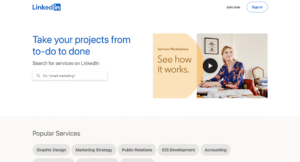
Final Takeaway
The UAE’s freelance market in 2025 is vibrant, offering opportunities for digital pros, translators, and local service providers. Whether you seek global tech projects, bilingual content gigs, or urban task work, these platforms connect you with clients who value quality. Choose one that aligns with your skills, legal needs, and career goals to build a thriving freelance career in the UAE.
